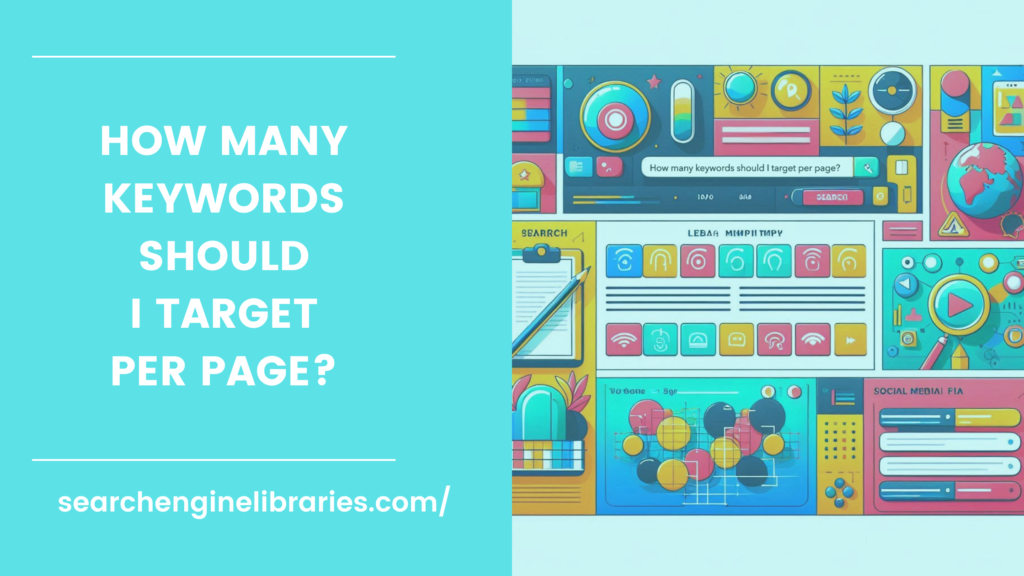When optimizing a webpage for SEO, targeting the right number of keywords is critical for balancing both search engine ranking and user experience. Typically, it is recommended to target 1-2 primary keywords and 2-4 secondary or long-tail keywords per page. This approach allows you to maintain content quality while also addressing SEO goals. Here’s a breakdown of how to effectively target keywords on a page:
Understanding Keywords
- Primary Keywords: These are your main focus and should reflect the core theme of the page. They should appear naturally in the title, URL, meta description, and throughout the body text.
- Secondary Keywords: These are closely related phrases or long-tail versions of your primary keywords. They help you attract a wider audience and cover more specific search intents.
Why Target Multiple Keywords?
Targeting multiple keywords per page helps attract various types of searchers who may use different terms to look for similar content. For instance, if you’re writing a page about “vegan recipes,” someone else might search for “plant-based dinner ideas” or “easy vegan meals.” By strategically incorporating secondary keywords, you can increase the chances of ranking for these variations.
Keyword Placement
- Title Tag: Include the primary keyword once. Ensure the title sounds natural and is under 60 characters for best results.
- Meta Description: Use both primary and secondary keywords naturally in the description to entice users. Keep it under 160 characters.
- Headings (H1, H2, etc.): Use your primary keyword in the H1 and secondary keywords in H2 or H3 subheadings.
- Body Text: Aim to have a natural keyword density of around 1-2%. Avoid keyword stuffing; instead, integrate the keywords seamlessly into the content.
1. Content Structure
The key to successful keyword targeting lies in how the content is structured. Here’s a sample outline of 500 words focused on engaging and informative content, optimized for SEO:
Introduction(50-100 words)
Start with an engaging opening that introduces the topic naturally. Mention the primary keyword early on, but ensure it doesn’t feel forced. For example: “Finding the right keywords to target per page is essential for driving organic traffic and improving your website’s search engine ranking. In this guide, we’ll explore how many keywords you should target per page and why balancing SEO with user engagement is critical.”
Why Focusing on 1-2 Primary Keywords is Crucial(100-150 words)
Explain why it’s important to focus on a few primary keywords, emphasizing how this can improve both user experience and SEO performance. Include a secondary keyword within this section, naturally embedded in the text. Example: “Targeting multiple primary keywords can lead to content dilution. Instead, focusing on one or two keywords per page allows you to create a clearer message that resonates with readers and aligns with their search intent.”
The Role of Secondary Keywords(100-150 words)
Discuss the role of secondary keywords and how they complement primary keywords. Provide examples to make the information relatable and informative. “While your primary keyword sets the main theme, secondary keywords allow you to cover more ground. For instance, if your page focuses on ‘SEO best practices,’ secondary keywords like ‘keyword research’ and ‘on-page optimization’ will help diversify the content and attract a broader audience.”
Best Practices for Keyword Placement(100-150 words)
Guide the reader on how to place keywords effectively within a page. Mention how using keywords in headings, body content, and image alt tags can contribute to SEO without sacrificing readability. “To maximize SEO benefits, ensure that your primary keyword appears naturally in your title, meta description, and headers. Secondary keywords can be scattered throughout the text, making sure they fit seamlessly into the flow of the content.”
Conclusion(50 words)
End with a brief conclusion that summarizes the key takeaway. Include a call to action that encourages engagement, such as asking a question or directing users to explore more. “By focusing on 1-2 primary keywords and incorporating secondary ones thoughtfully, you can create SEO-friendly content that both users and search engines will love. How do you approach keyword targeting for your pages?”
User Engagement and SEO
The goal is not just to rank well but to provide value. Engaging content should answer user queries, provide actionable insights, and be easy to read. Use images, bullet points, and short paragraphs to enhance readability and engagement. Incorporating keywords naturally into compelling content makes it easier for search engines to rank your page while also ensuring visitors find what they need.
By targeting 1-2 primary keywords and 2-4 secondary keywords, you can optimize each page without overwhelming it with too many keyword variations. Balancing SEO with engaging content ensures that your page will rank better, offer value, and keep users coming back.

